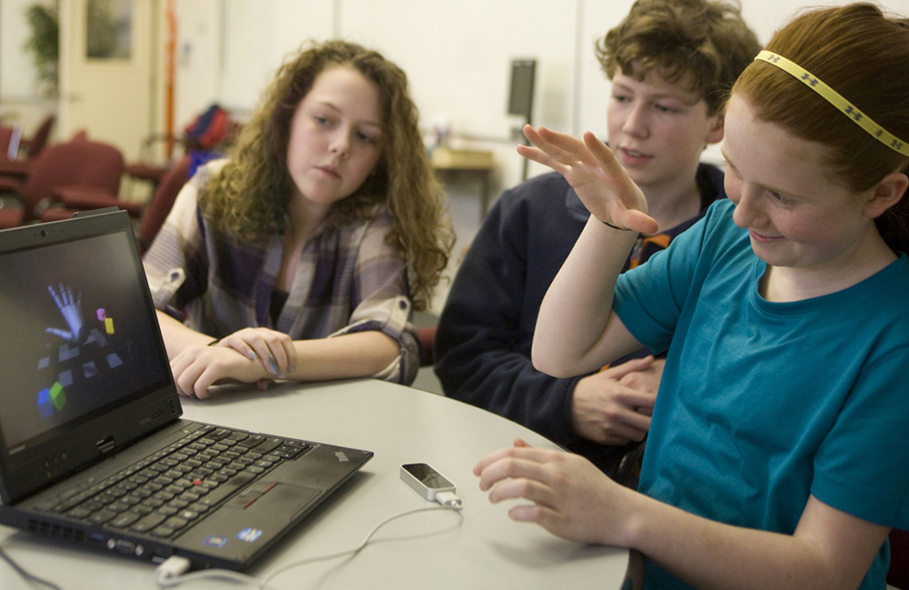TIER-ED: Working to Solve Problems, Improving Education and Learning
by Tom Hanlon / Apr 1, 2021

TIER-ED, in taking on the education and learning challenges of today, is aiming to change the face of learning for tomorrow.
TIER-ED brings high-tech solutions to complex problems faced in the world of education and lifelong learning.
It’s a role that Robb Lindgren, director of TIER-ED (Technology Innovation in Educational Research and Design) and an associate professor in Curriculum & Instruction at the College of Education, cherishes.
“For a very long time, there have been some really smart and exciting projects that have tried to develop new technologies for all aspects of education,” says Lindgren. “But the problem is often in the implementation and in the understanding of the cultural context in which those technologies are being used. TIER-ED is trying to be more empathic and more responsive than many of these previous efforts to the issues of implementation.”
Some of that responsiveness, Lindgren notes, results not in mass targeting an intervention, but in customizing its design for specific groups and environments that align with the affordances particular technologies offer.
Doing so, he adds, positions TIER-ED to have a significant impact on education. “We’re thinking both about what are the capabilities of the new technologies we have available, and also deeply understanding the educational problems they have the potential to solve,” he says.
Issues TIER-ED is Tackling
Lindgren says the list of educational challenges that TIER-ED is working on is long, but gives a few examples:
- Learning problems. “There’s been a lot of research on how people learn STEM content, on how people learn to read, how they learn specialized topics like economics and the arts. We can do a better job of developing technologies that are catered to the specialized forms of learning and understandings in those areas."
- Cognitive and emotional issues. “There are issues of confidence and identity—does someone see themselves as a future engineer or a future historian? If not, there are ways that new technologies, such as virtual reality, can change someone’s perspective and help them see themselves as being competent in these disciplines.”
- Collaboration issues. “How do you bring people together to work effectively in teams to solve problems in various contexts? Dr. Emma Mercier is an expert in this, and she and I have a current NSF-funded project where we have brought virtual reality headsets and tablet computers into Parkland College astronomy classrooms. We’re trying to understand how small groups of students work together, knowing that learning is not just defined by what one person knows, but how a group shares and coordinate with each other to solve problems.”
“One of the things I find limiting about existing learning technologies is that they tend to require people to type on keyboards and to use mouse controls,” Lindgren says. “In my own research I think about ways technologies can support other ways of using the body, such as hand gestures. Likewise, Cynthia D’Angelo, who is one of our TIER-ED hires, thinks about ways to understand vocal communication in small groups and analyze patterns in those interactions. Mike Tissenbaum, another TIER-ED hire, is doing some really cool work in large classroom-sized games and simulations that promote learning. All this work is offering students new ways to interact and develop agency in their own learning.”
A third TIER-ED hire, Nathan Castillo, is leading the charge for a TIER-ED subgroup that is focused on international work.
Strong TIER-ED Community
Lindgren says he is proudest of the sense of community that TIER-ED has established. “That can be a throwaway term, but for those of us who’ve worked in academia and really in any professional area, we know how challenging it can be to develop an authentic community where people are helping each other, where they have mutual interests, and are synergizing in their work in ways that are impactful,” he says.
TIER-ED holds monthly one-hour community meetings, typically with an outside or community speaker, while also hearing internally from people who have been funded by the program and who give short talks on their work.
“It’s been an effective mechanism for keeping people invested and involved in the work,” Lindgren says. “Sense of community can be difficult to measure, but it’s the sort of thing you know it when you feel it, and I’m feeling it with TIER-ED.”